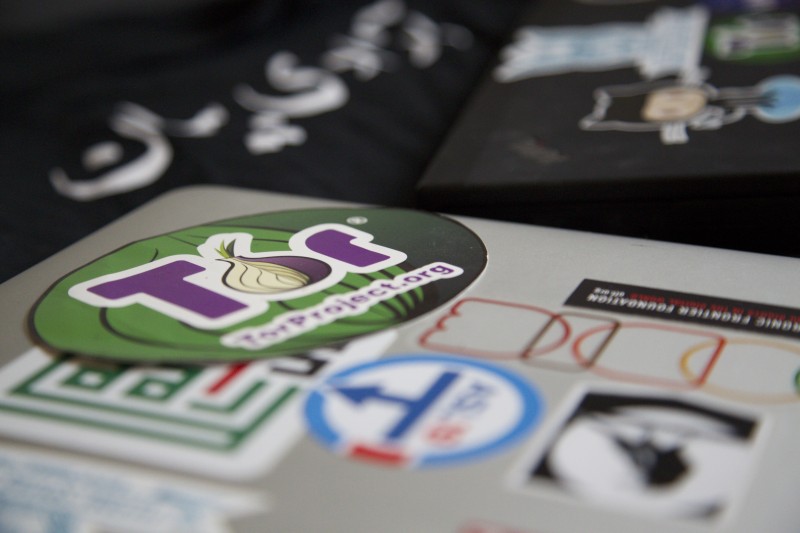
Photo by Frederic Jacobs, used with permission.
Tor, a popular online anonymity tool used by many Iranians to bypass Internet censorship, was blocked from late July until the beginning of August. The block prevented 75 percent of the network's estimated 40,000 daily users in Iran from connecting to Tor.
Tor has been of particular sensitivity since it was widely used by activists, protesters and citizen journalists during the 2009 Green Movement. The software, used by digital activists worldwide, allows users to reach their target website by tunneling through a network of intermediary servers, a process that anonymizes the users along the way and makes their identities indecipherable for ISPs, thus allowing them to circumvent government-imposed censorship. Tor is an open source software and has a large community of users and developers who work to detect and eliminate security flaws and bugs, along with filtering by governments.
On July 30, the Tor project reported users couldn't access regular Tor connections in Iran. Tor metrics also showed a drop in the number of users connecting to the service on a daily basis.
In an email to Global Voices, Tor Project Executive Director Andrew Lewman explained on Aug. 4 that authorities were “throttling” or severely slowing down network traffic that appeared to be encrypted. “Iran is throttling any protocol which looks like encryption or SSL traffic,” he said. “This includes native Tor, but pluggable transports work just fine.”
Lewman identified a key challenge that users of Tor and other anonymization tools face: While governments generally cannot decode anonymized traffic online, they can easily distinguish traffic that is anonymized or encrypted. And if they want to, they can block it — this is what the Iranian government did a few weeks ago.
What Lewman identifies as a solution is the “pluggable transport”, a type of Tor connection that connects to the network using a hidden pathway known as a bridge. This mechanism makes it more difficult for governments to see traffic, and thus more difficult to block it.
“The key thing is,” explained Jacobs, “even though Tor is used for anonymity, it doesn't hide the fact that you're using Tor if you're not using pluggable transports.”
Tor metrics show a significant increase in the number of Iranians using Tor bridges since the temporary block on native Tor.
On Aug. 5, London-based Internet researcher Nariman Gharib reported on his Twitter page that the connection to Tor had been restored.
دسترسی مستقیم به سرویس #تور رفع فیلتر شد. Direct access to #TOR Is Unblocked Again in #Iran. #Filternet pic.twitter.com/fVPSUbBFsu
— Nariman Gharib (@ListenToUs) August 5, 2014
Since 2011, the Iranian government has been known to engage in a cat-and-mouse game with Tor in order to block connections to the country. The Iranian government periodically releases new filtering rules intended to block Tor traffic, to which the Tor community typically responds with a same-day antidote for the block. For now, the game continues.




1 comment